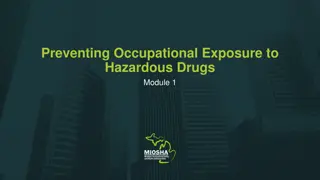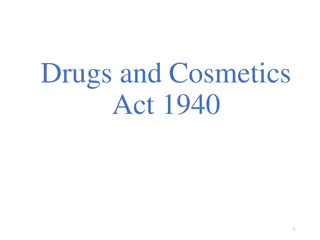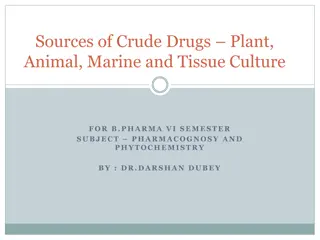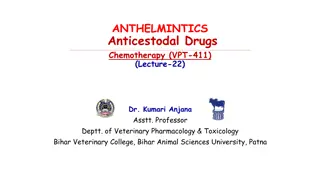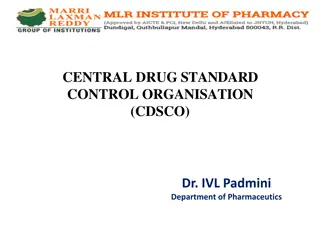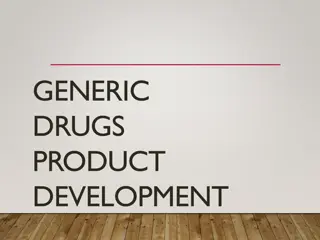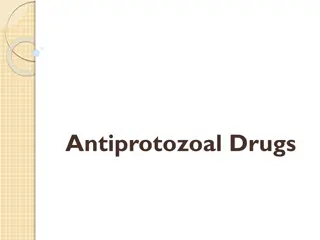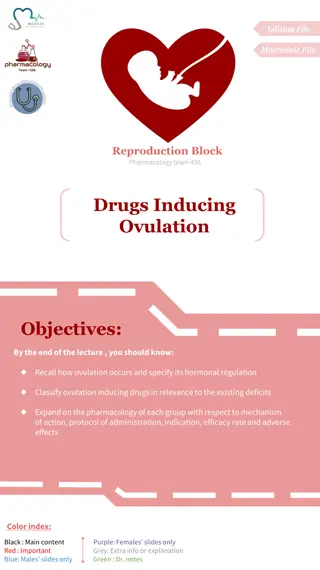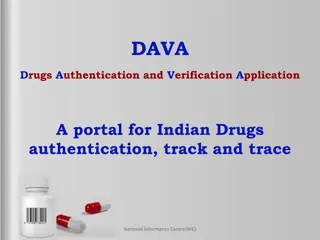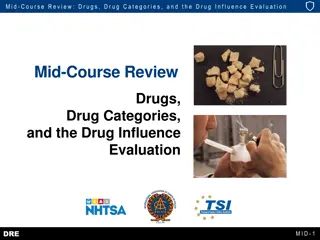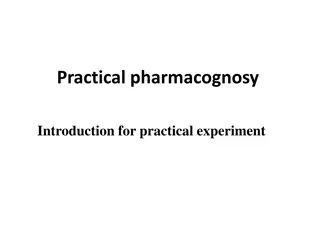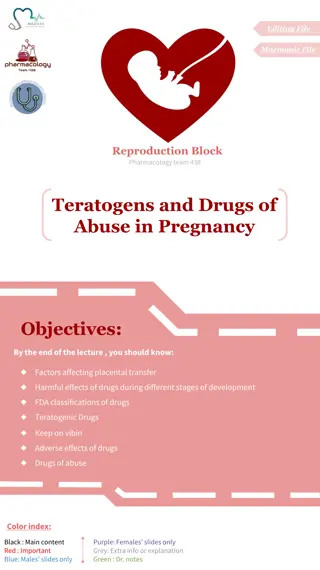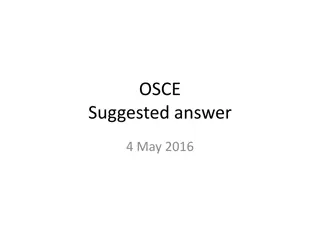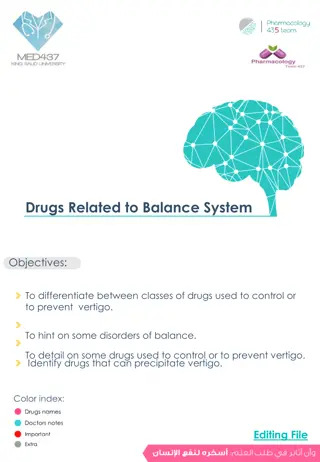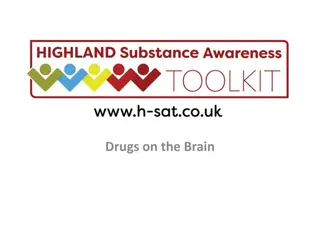
Pharmacological Actions of Anticholinergic Drugs: Classification and Effects
Explore the classification and pharmacological actions of competitive antagonists at M.I., including natural alkaloids like Atropine and Hyoscine, along with synthetic drugs. Learn about their effects on the CNS, cardiovascular system, smooth muscles, exocrine glands, eye, body temperature, and ganglia. Discover details about various anticholinergic drugs, their uses, and side effects.
Download Presentation

Please find below an Image/Link to download the presentation.
The content on the website is provided AS IS for your information and personal use only. It may not be sold, licensed, or shared on other websites without obtaining consent from the author. If you encounter any issues during the download, it is possible that the publisher has removed the file from their server.
You are allowed to download the files provided on this website for personal or commercial use, subject to the condition that they are used lawfully. All files are the property of their respective owners.
The content on the website is provided AS IS for your information and personal use only. It may not be sold, licensed, or shared on other websites without obtaining consent from the author.
E N D
Presentation Transcript
CLASSIFICATION All are competitive antagonist at M I. Natural Alkaloids:- Atropine, Hyoscine II. Semisynthetic:- Homatropine, Ipratropium Br, Tiotropium, Hyoscine Butyl Br, Atropine Methonitrate
CLASSIFICATION (contd.) III. Syntetic:- A. Mydriatics:- Cyclopentolate, Tropicamide B. Antisecretory Antispasmodic:- Methantheline, Propantheline, Clidinium, Oxyphenonium, Isopropamide, Pipenzolate, Dicyclomine, Flavoxate, Oxybutynin, Telenzepine, Pirenzepine. C. Antiparkinsonian- Trihexyphenidyl, Benztropine.
PHARMACOLOGICAL ACTIONS CNS:- Atropine- less entry stimulation of CNS High dose- excitation, disorientation, hallucination Hyoscine- freely enters depression of CNS of vestibular excitation- emesis Synthetic Antiparkinsonian drugs CVS:- Tachycardia due to vagal tone (Bradycardia?) Facilitation of AV conduction Blood Pressure minor change
PHARMACOLOGICAL ACTIONS(contd.) SMOOTH MUSCLES:- GIT- Vagus Vs. Morphine induced GNS - local mediators (5-HT, Enkephalin) Biliary tract- Weak relaxn Urinary- tone of ureter tone of fundus contraction(prostate) Bronchi- Relaxn Bronchodilation
PHARMACOLOGICALACTIONS(contd.) EYE Relaxnof circ. mus. Mydriatic Paralysis of ciliary mus . Cycloplegia, photophobia & blurring. EXOCRINE GLANDS:- secretions Salivary Sweat Bronchial Lacrimal Gastric BODY TEMPERATURE:- is Thermostat + Sweating GANGLIA:- M1 (Pirenzepine)
OTHER DRUGS Homatropine Cyclopentolate Tropicamide Hyoscine Butyl Br:- G .I. smooth muscles Atropine Methonitrate:- Oral Methantheline:- Oral, long duration Ganglion block postural hypo. Urinary retn, impotence. Propantheline:- Less S/E Oxyphenonium:- Potent antispasmodic Pirenzepine:- M1 selective (Telenzepine) Ophthalmic
OTHER DRUGS (contd.) Dicyclomine :- Direct relaxant also + antiemetic Oxybutynin :- Urinary bladder & salivation Glycopyrrolate:- Potent, rapid Flavoxate:- Analgesic, L.A. & Anticholinergic urinary pathologies Clidinium:- With chlordiazepoxide Isopropamide:- Long duration Ipratropium:- Bronchi (inhalation) Tiotropium Drotavarine:- Selective PDE4
THERAPEUTIC USES Anti-secretory:- a)GIT Hyperacidity, peptic ulcer, nervous diarrhea, IBS, Emotional b)Bronchi:- Preanaesthetic med. (Laryngeal spasm) (Glycopyrrolate) Anti-spasmodic a) Intestinal colic, biliary colic, pyloric stenosis, spasm b) Nervous diarrhea, IBS, spastic colon c) Urinary urgency, Dyspepsia, frequency, cystitis, supra-pubic pain (Tolterodine, Trospium Cl.)
THERAPEUTIC USES (contd.) Bronchial Asthma:- Ipratropium/ tiotropium low efficacy/ thickness of mucous, cf- 2 agonists Vaso-vagal syncope:- Atropine(AV block) d/t vagal stimulation Anti-parkinsonian:- Ophthalmic:- Refractory error, iridocyclitis, fundoscopicexamination- 1 ago., Antiemetic:- Motion sickness Poisonings:- mushroom poisoning, organophosphorous poisoning

